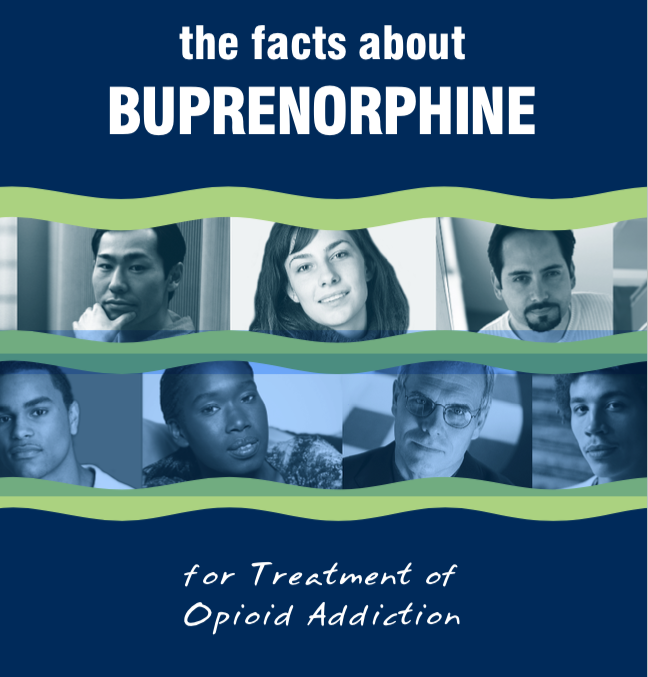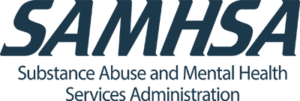
How do you escape from the misery and risks of drug addiction? Most people cannot do it on their own. They need help to return to normal, healthy living. One important form of help is called medication-assisted treatment.
There are three, equally important parts to this form of treatment:
• Medication
• Counseling
• Support from family and friends.
Buprenorphine is one type of medication used for treatment
of opioid addiction. Perhaps your doctor or substance abuse treatment provider has recommended it for you, or perhaps you already take it. This post gives you the facts you need to know.
Opioids are drugs that slow down the actions of the body, such as breathing and heartbeat. Opioids also affect the brain to increase pleasant feelings. They get their name from opium, a drug made from the poppy plant.
Opioid medications are prescribed to treat pain and sometimes for other health problems such as severe coughing. Heroin is an illegal opioid that is smoked, snorted, or injected to get a good feeling, often called a “rush” or “high.” People also sometimes seek this feeling by taking large doses of prescription opioids.
If you take opioids, you can become tolerant to them. This means that more of the drug is needed to obtain its effects. It is also possible to become dependent on opioids. This means that if you stop taking them, you will feel sick. This sickness is called withdrawal. Dependence is not the same as addiction, but sometimes dependence leads to addiction. The signs of addiction are:
• Craving—The mind develops an overwhelming desire for the drug.
• Loss of control—It becomes harder to say no to using the drug. Use is compulsive and continues even though the drug causes harm.
Tolerance and dependence are common side effects of prescribed opioid medication that can be managed under a doctor’s care. Tolerance and dependence also are side effects from misuse of opioids. Addiction is not likely to develop in a person using medication properly, but this sometimes happens. Addiction usually occurs through misuse. Some people are at higher risk of addiction because of their genes, temperament, or personal situation.
Not everyone who uses opioids gets addicted. But it is difficult to stop using opioids after you have become addicted, because the cravings are so strong and the fear of withdrawal is so great.
Opioid addiction is a chronic disease, like heart disease or diabetes. A chronic disease is a medical condition for life. It cannot be cured, but it can be managed. A person with addiction can regain a healthy, productive life.
But if you are like most people, you cannot walk away from addiction on your own. Treatment—the care of medical pro- fessionals and substance abuse treatment providers—can help.
Treatment helps you give up the problem drug. It helps you get through withdrawal and cope with cravings. Treatment also helps you change addictive thinking into nonaddictive, health- ful patterns. It can help you move away from other harmful behaviors, too, such as drinking alcohol or abusing other drugs besides the problem opioid.
Just as important, treatment helps you address life issues you might have that are tied to the addiction, such as feelings of
low self-worth, a bad situation at work or home, or spending time with people who use drugs. In short, treatment helps you move into a healthy, addiction-free lifestyle—into a way of living referred to as recovery.
Medication-assisted treatment is treatment for addiction that includes the use of medication along with counseling and other support. Treatment that includes medication is often the best choice for opioid addiction.
The person who takes buprenorphine feels normal, not high. However, the brain thinks it is receiving the problem opioid, so withdrawal symptoms stay away. Buprenorphine also reduces cravings. If cravings continue to be a problem, your doctor will ad- just your medication or help you find other ways to reduce them.
Suboxone® contains buprenorphine plus another medication called naloxone. The naloxone is added to prevent abuse—it brings on withdrawal in people who abuse buprenorphine by injecting it. Subutex® contains only buprenorphine. This form is prescribed if you should not take naloxone for any reason, such as if you are allergic to it or are pregnant.
The pill is taken once a day. Over time, the dose interval may stay at once a day or change to every other day.
The main advantages of buprenorphine are:
-
You are unlikely to overdose on buprenorphine if you take it properly.
-
Buprenorphine is long acting. This means that after an initial period, your doctor may have you take the pill every other day rather than once a day.
-
Doctors can prescribe buprenorphine so that you can take doses at home. Important: Not all doctors have approval to prescribe this medication, and not all doctors provide counseling for addic- tion. Also, daily check-in at a treatment center can be helpful to recovery. Therefore, for some people, a treatment center is the best place to receive medication for opioid addiction.
Before you are given the first dose of any medication for opioid addiction, your doctor will ask you questions about your addiction, health, and other problems. You will get a drug test—usually a check of urine or saliva. You also will have a physical exam and tests for diseases that are common to people who have been
abusing drugs. Your liver will be checked to make sure the medication can be safely taken. If buprenorphine is safe and appropriate for you, your doctor may recommend it.
You and your doctor or substance abuse treatment provider decide together on a treatment plan. The plan describes the medication routine, the counseling and other services that will be provided, and the rules that must be followed. These rules will be explained to you and you will get them in writing.
Your doctor will prescribe a low dose to start taking after withdrawal symptoms begin. Dose levels may be adjusted up as needed. Always take doses exactly as prescribed by your doctor.
Suboxone®
can make you feel drowsy at first. You should not drive or perform other high-risk tasks until you know how this medication affects you. If drowsiness continues to be a problem, your doctor may adjust dose levels.
You may take buprenorphine for days, months, or years—as long as it is needed to prevent relapse. However, you should be checked often by a doctor if you have liver disease.
If you are stable in recovery and want to stop taking buprenorphine, you must do it slowly, over time. This is called tapering. Tapering works best with the help of your doctor or substance abuse treat- ment provider, after progress has been made in treatment.
Medication is one part of treatment for opioid addiction. For many people, another important part is counseling: the opportunity to talk with a professional either one-on-one or in a group with others in treatment.
Through counseling, you learn about the motivations and behaviors that led to your opioid addiction. You learn how to commit to a more healthful lifestyle. You gain support and skills while working with others to manage your recovery long term.
Counseling can provide you with encouragement and with motivation to stick to treatment. It can help you learn how to make healthy decisions, handle setbacks and stress, and move forward with your life.
In group counseling, you connect with others in treatment and make new friends who don’t use drugs. You can get these benefits from support groups, too. These are informal meetings of people facing similar challenges.
• This is not a complete list. Listing here does not mean that the Substance Abuse and Mental Health Services Administra- tion (SAMHSA) endorses any of the organizations.
-
Some support groups have abstinence-only policies and do not look favorably on medication-assisted treatment. The programs listed here do not have such policies, but individual group meetings vary. You may need to try several support groups to find the right one.
-
Some support programs are just for people with a substance use disorder, and others allow families and friends to attend meetings or have separate meetings for them. Check with each organization for details.
-
An Internet-based support group may be your best option
if no groups meet in your community. Another option is to contact Alcoholics Anonymous (AA, http://www.aa.org) to find out whether AA meetings in your community are open to people in recovery from other substances besides alcohol.Dual Recovery Anonymous
http://www.draonline.org or 913-991-2702
LifeRing
http://lifering.org or 800-811-4142
National Alliance of Advocates for Buprenorphine Treatment
http://www.naabt.orgRational Recovery
http://www.rational.org or 530-621-4374
Secular Organizations for Sobriety
http://www.sossobriety.org/home.html or 323-666-4295
SMART Recovery
http://www.smartrecovery.org or 866-951-5357
Women for Sobriety, Inc.
http://www.womenforsobriety.org or 215-536-8026
Buprenorphine physicians and
treatment program locator
800-662-HELP (4357) (English and Español) 800-487-4889 TDD (for hearing impaired) http://buprenorphine.samhsa.gov/bwns_locator/index.html
Article from: https://www.samhsa.gov/

